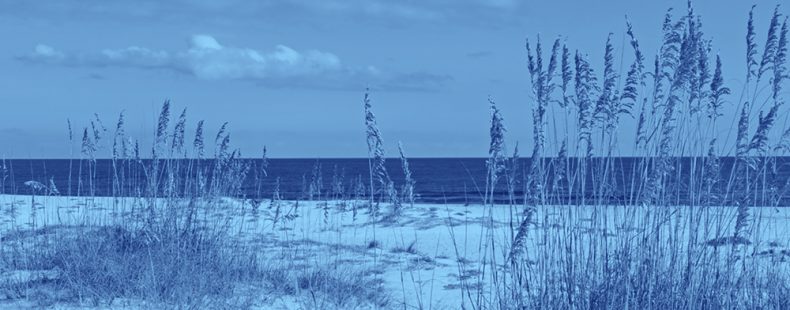The United States has a lot of belts. No, we’re not talking about the things that cinch around your waist, but belts as in regions with distinctive properties or characteristics. The term has been used since at least the mid-1800s to refer to these grouped areas. Today, belts is used to describe plenty of places in a rhetorical manner—a technology belt along the West Coast, for instance. Yet there’s a select number of established belts in the US with long histories linked to the location and name.
Buckle Up And Explore 13 US Regions Called “Belts”

Rust Belt
The term Rust Belt was first recorded in 1980–85. It refers to the industrial areas of the Northeastern and Midwest US that were once primary manufacturing centers for things like steel and textiles. Ohio, Indiana, Illinois, Michigan, and Pennsylvania are all part of the Rust Belt. Factories in these states thrived in the post-WWII years. Rust, of course, doesn’t hint at manufacturing longevity, and the regional name refers to the economic decline faced as businesses closed due international competition and other factors in the 1970s and 80s. As many of the jobs left, so did many of the people, who moved south to the Sun Belt states (more on that region later).

Bible Belt
Encompassing a number of other “belts” in the US, the Bible Belt covers a large area of the South (including Alabama, Louisiana, Mississippi, Tennessee, Texas, and North and South Carolina) and the Midwest (Kansas, Kentucky, Oklahoma, and Missouri). It also covers parts of the southern regions of more northern states like Ohio, Illinois, Indiana, as well as West Virginia and Virginia. The name dates back to 1925–30 and comes from the fact that there’s a large population of Protestant fundamentalist Christians in the region. Larger cities in the Bible Belt are sometimes called the buckles.
Do you know what amen means at the end of prayers? Discover the meaning and origin of amen.

Cotton Belt
The Cotton Belt is a term that dates back to 1870–75. It refers to what were historically the cotton-growing regions of Alabama, Georgia, and Mississippi prior to the Civil War, though the belt has more recently extended to include parts of Texas and California. Antebellum agriculture in the South was largely dependent on enslaved people. After the end of slavery and sharecropping, the cash crop shrank to a smaller, but still sizeable, part of the Cotton Belt’s economy, and the agriculture-derived name persists.

Corn Belt
Rows of corn fields line the Midwest, especially in Ohio, Nebraska, and the “I” states of Iowa, Illinois, and Indiana. This is the Corn Belt, and it’s known for corn-fed livestock as well as its namesake grain. The moniker dates back to 1880–85. Corn grows particularly well in the Midwest’s upper Mississippi Valley, otherwise known as the prairie triangle, where it’s been the region’s main crop since the early 1900s. Today, soybeans and other feed grains are also commonly grown in rotation, though the area keeps the more specific Corn Belt name.

Sun Belt
As you move south in the US, you get closer to the equator and the average year-round temperature starts to rise. The belt of southern and southwestern states from Florida over to California are all included in this region, which is appropriately called the Sun Belt. The name was given in 1950–55 to combine locations with a few things in common: warm weather, lots of economic and population growth, and, in some areas more than others, people who lean politically conservative. The Sun Belt’s growth over more than half a century can in part be attributed to the proliferation of air conditioning that makes the hot summers more bearable. The shift in population from the North and Midwest to the South and Southwest led to more political representation of the Sun Belt states through the late 20th century and into today, especially in states like California, Texas, and Florida.

Frostbelt and Snowbelt
Northern states with notably cold winters get two “belt” names: Frostbelt and Snowbelt. It encompasses the Midwest and the Northeast—both of which are regions where plenty of snow falls in the colder months. These aren’t the only areas of the US that get cold, of course, but they are the only ones that receive the cool (literally) Frostbelt and Snowbelt names. The belts are particularly centered around the Great Lakes in the states of Illinois, Indiana, Michigan, Minnesota, New York, Ohio, Pennsylvania, and Wisconsin.
If the winters seem colder and the summers seem hotter, it may be time to review these climate change terms to stay up to speed.

Jell-O Belt
Many “belts” in the US have a name that’s directly tied to a particular crop, or a shared history or fundamental belief. The Jell-O Belt is named after a name-brand food. It’s centered around Utah, though it runs through parts of the states of Idaho, California, Wyoming, and Nevada. The Jell-O Belt doesn’t get its name from some extremely well-executed marketing campaign. Instead, it’s from the popularity of Jell-O among those of the Mormon faith. In fact, the Jell-O Belt is also sometimes referred to as the Mormon Corridor due to the primary religious belief of residents.

Black Belt
The Black Belt originally referred to a small area in central Alabama and Mississippi that has dark chalky soils. The rich land was ideal for growing cotton, thus the Black Belt’s historical overlap with the Cotton Belt and the shared past of fields and plantations worked by enslaved people. It took on another meaning after the Civil War to refer to areas with a large Black population—often in a politically charged way, especially during the Civil Rights era. Under that meaning, the Black Belt expanded from the dark-soil regions of the deep South to encompass parts of Virginia through Texas.

Wheat Belt
The Wheat Belt is the breadbasket of America. It’s where, as the name suggests, much of the country’s wheat is grown and stretches north to south rather than the east to west orientation of many of the other belts. The Wheat Belt is in the Great Plains region from North Dakota down through parts of Kansas, Oklahoma, Nebraska, Colorado, and Texas. Winter wheat that’s planted in the fall and harvested in the summer is grown below the Dakotas, while red spring wheat that’s harvested in the fall is grown in Minnesota, Montana, and North and South Dakota.

Rice Belt
The majority of the rice consumed in the US is grown in what’s known as the Rice Belt. It covers the southern states of Arkansas (the state that produces the most rice in the country), Louisiana, Mississippi, Missouri, and Texas, as well as parts of northern California in the Sacramento Valley. The modern-day Rice Belt does not include South Carolina, once a major rice producer and the place where wetland rice farming was introduced to the country by enslaved people brought from West Africa.

Unchurched Belt
The Unchurched Belt is the antithesis of the Bible Belt in that it is defined by a (culturally perceived) lack of a predominant religion. It’s centered around the Pacific Northwest in Oregon and Washington. Though the name includes the word church, it more broadly refers to a lack of any form of organized religion. Instead, the Unchurched Belt is characterized by a mix of beliefs that has thrived in the region since settlers moved west.

Borscht Belt
Some of America’s “belts” cover a vast swatch of land. Others, like the Borscht Belt, are localized to a single small location. Borscht is a type of beet stew that’s popular in Eastern Europe. The Borscht Belt is in the Catskills Mountains of New York about 100 miles north of New York City. It gets its name due to its popularity as a vacation destination for Jewish people of primarily Eastern European descent from the late 1890s through the 1970s. It was especially popular after World War II, when it became a favorite summer getaway from the hot city.
Learn more about the diversity within Jewish American culture here.

Fruit Belt
America’s Fruit Belt refers to the orchards that proliferate in the region around the Great Lakes, which has a beneficial climate for the cherries, apples, plums, and pears. Many fruits prefer the cool temperatures and thrive in places that are rarely hotter than 80 degrees. Farms, festivals, and markets showcase the bounty, and even in 1914, a travel guide made the case for agritourism, boasting, “No tour through Michigan is complete without a ride through the famous Fruit Belt.” (There is also a historic neighborhood in Buffalo, NY known as the Fruit Belt.)
Now that you have some US geography under your belt, take a look at these terms to understand Asian & Pacific Island people, culture, & geography.












